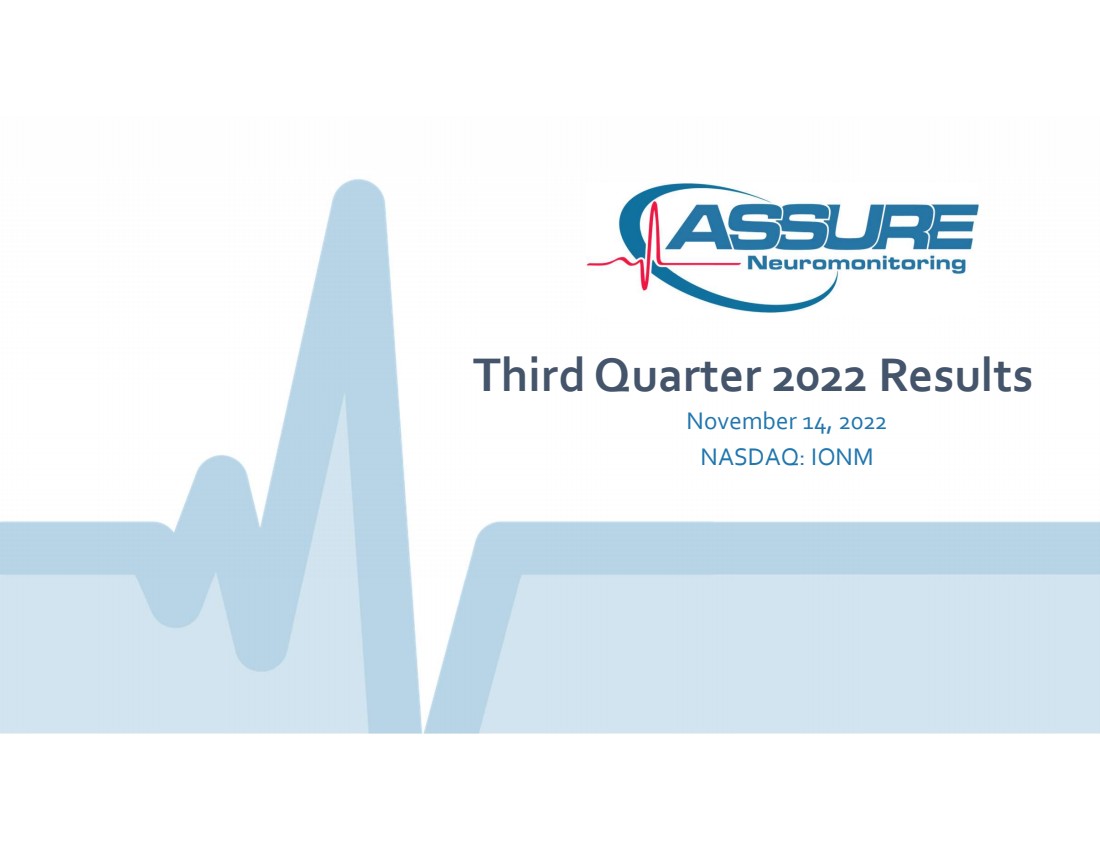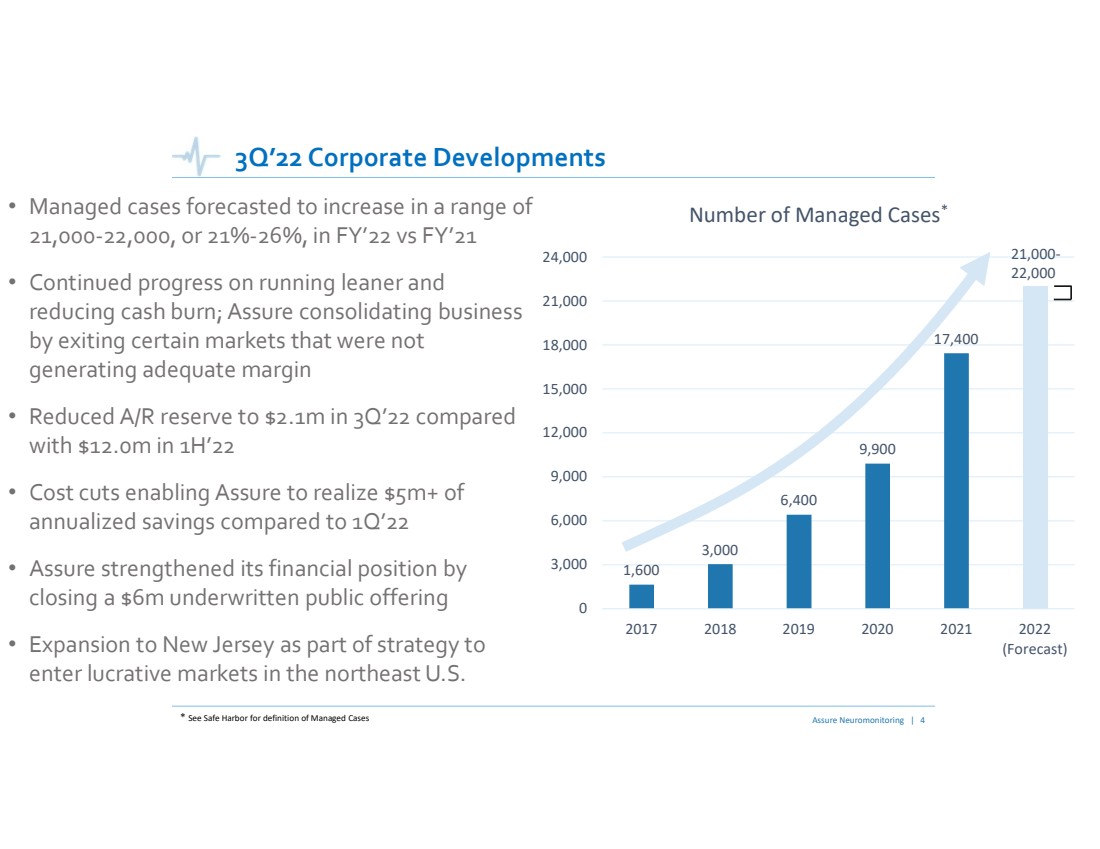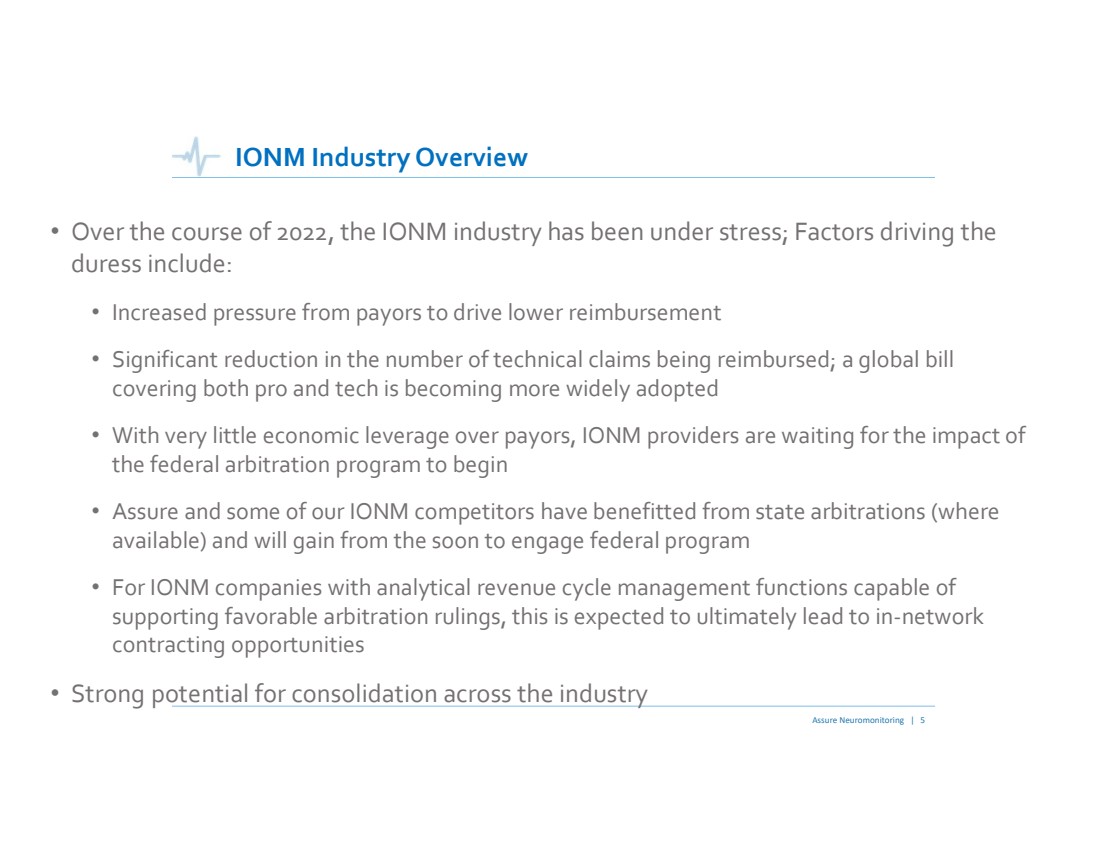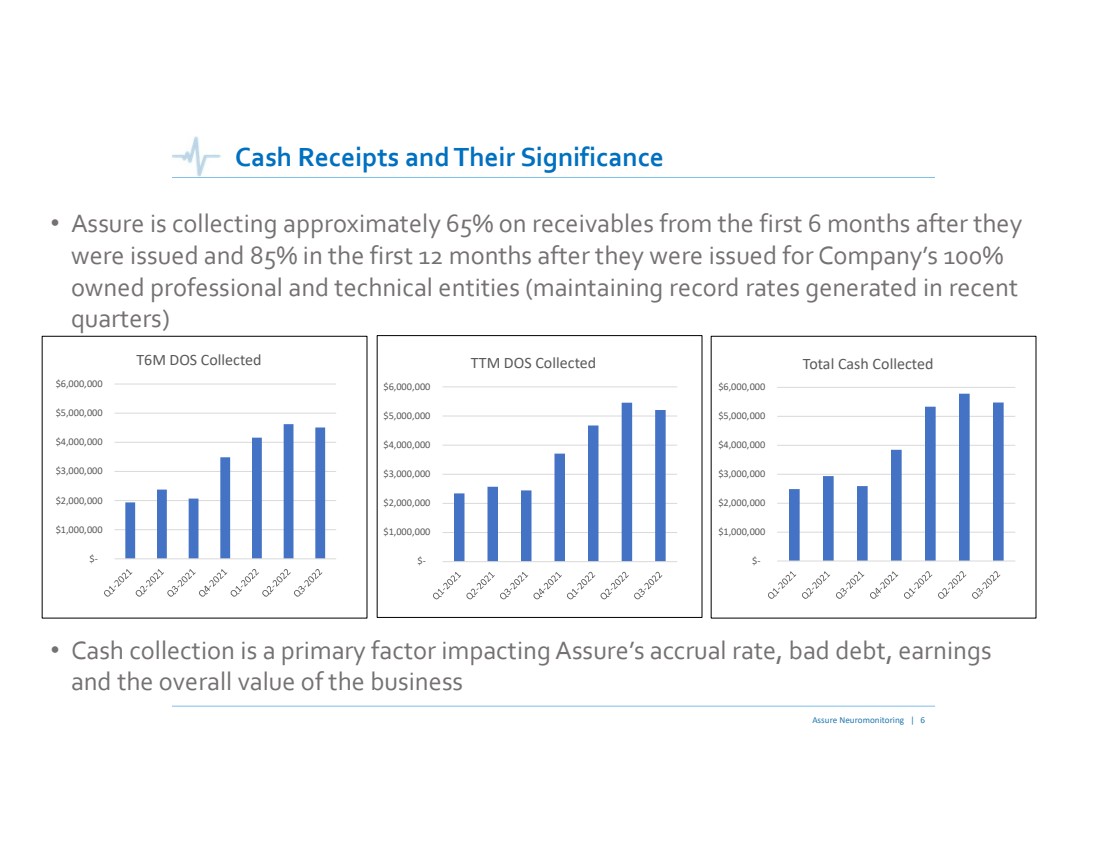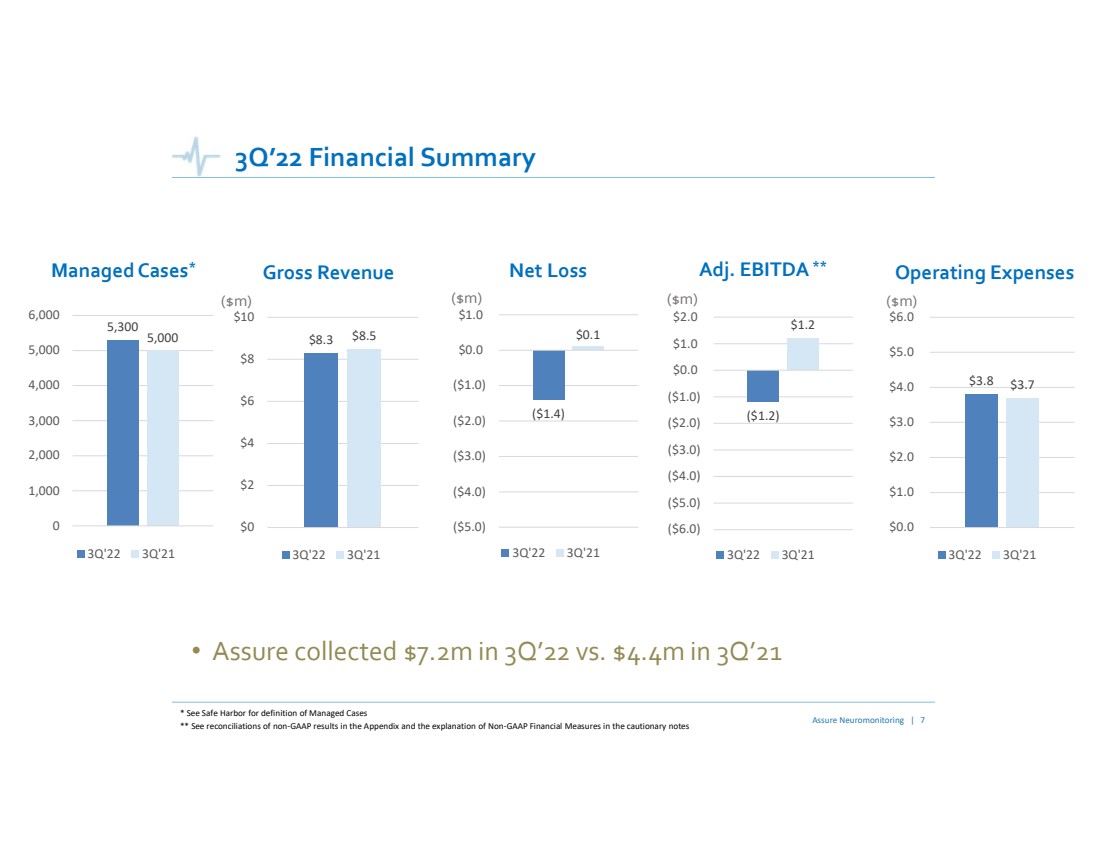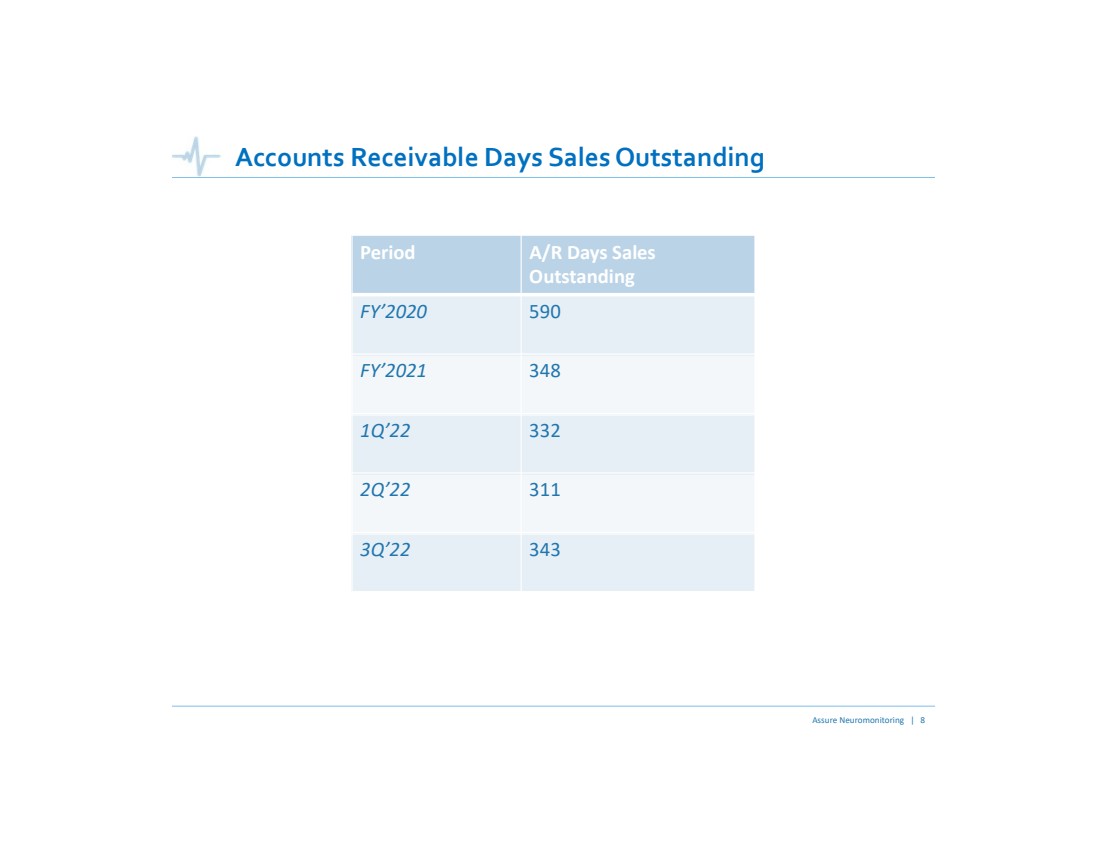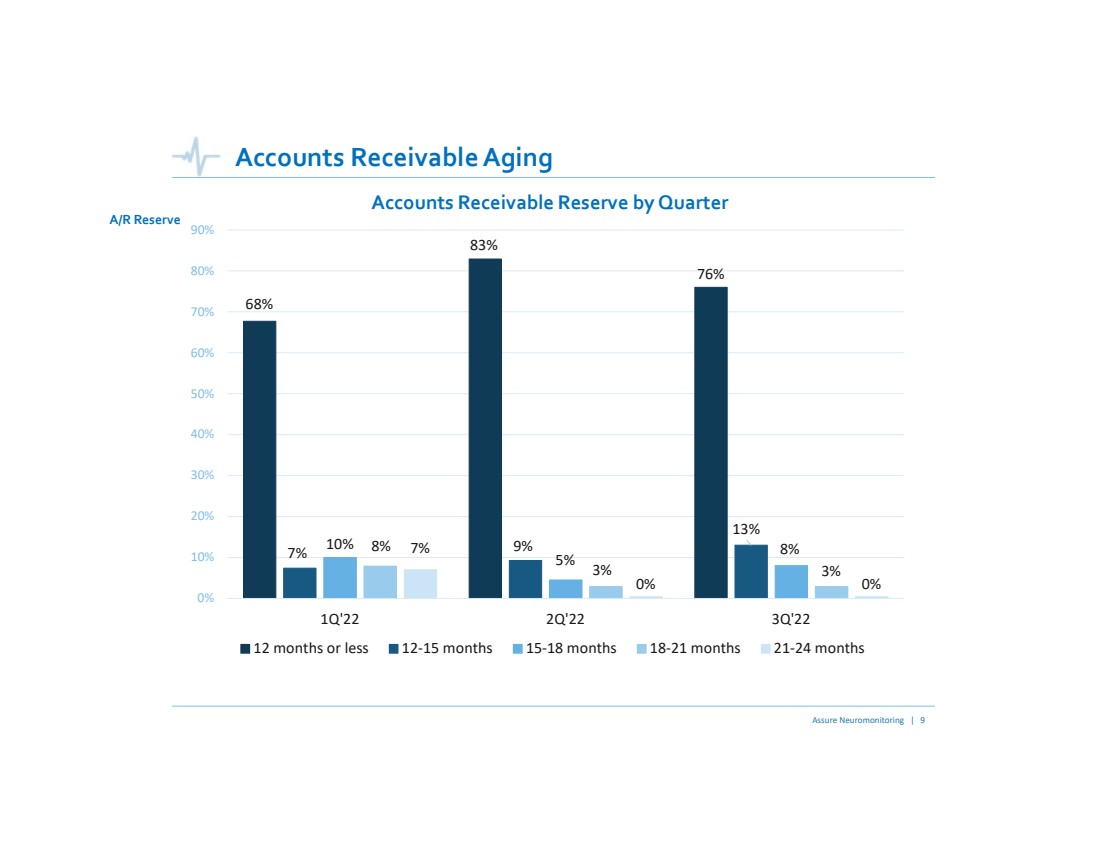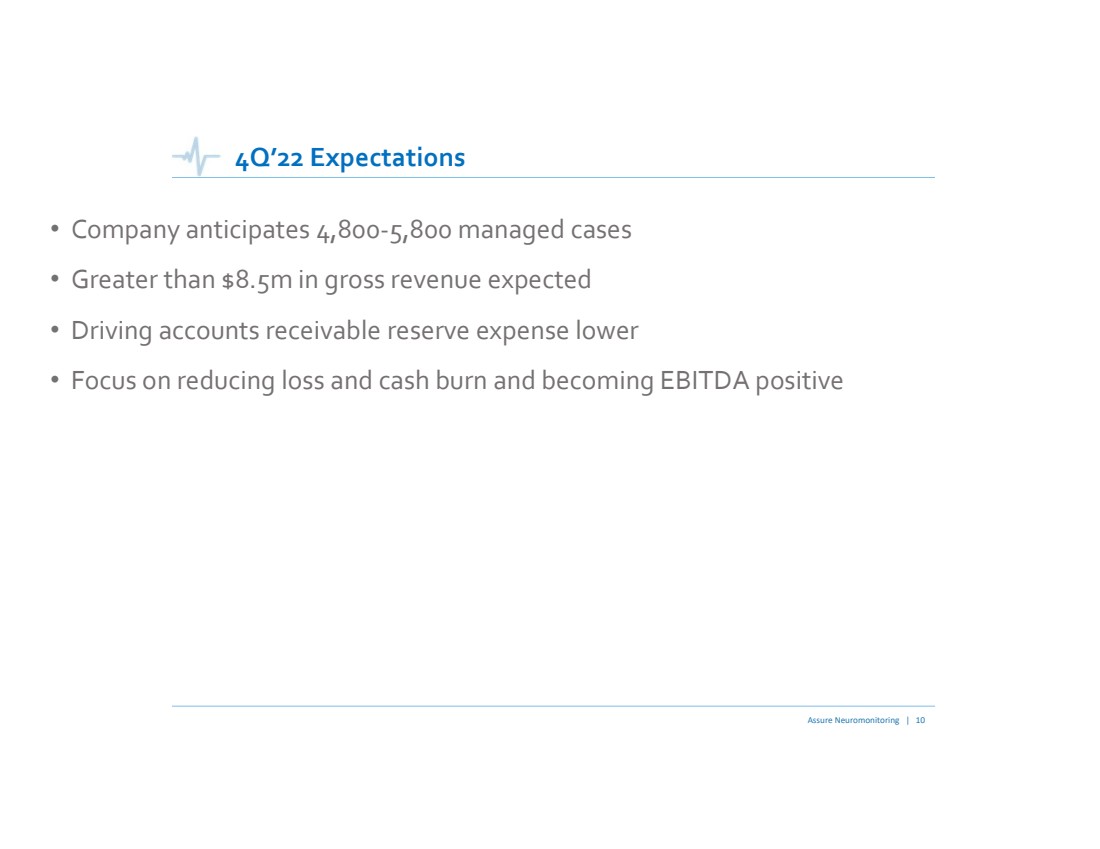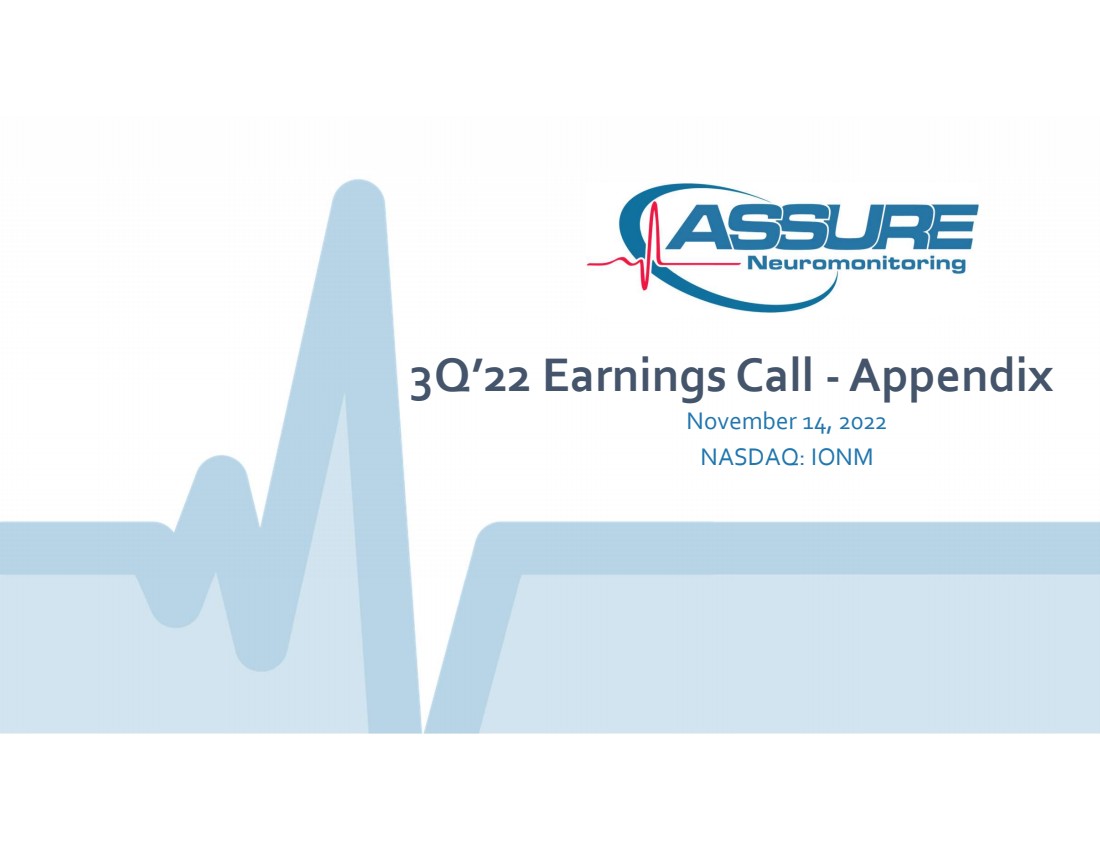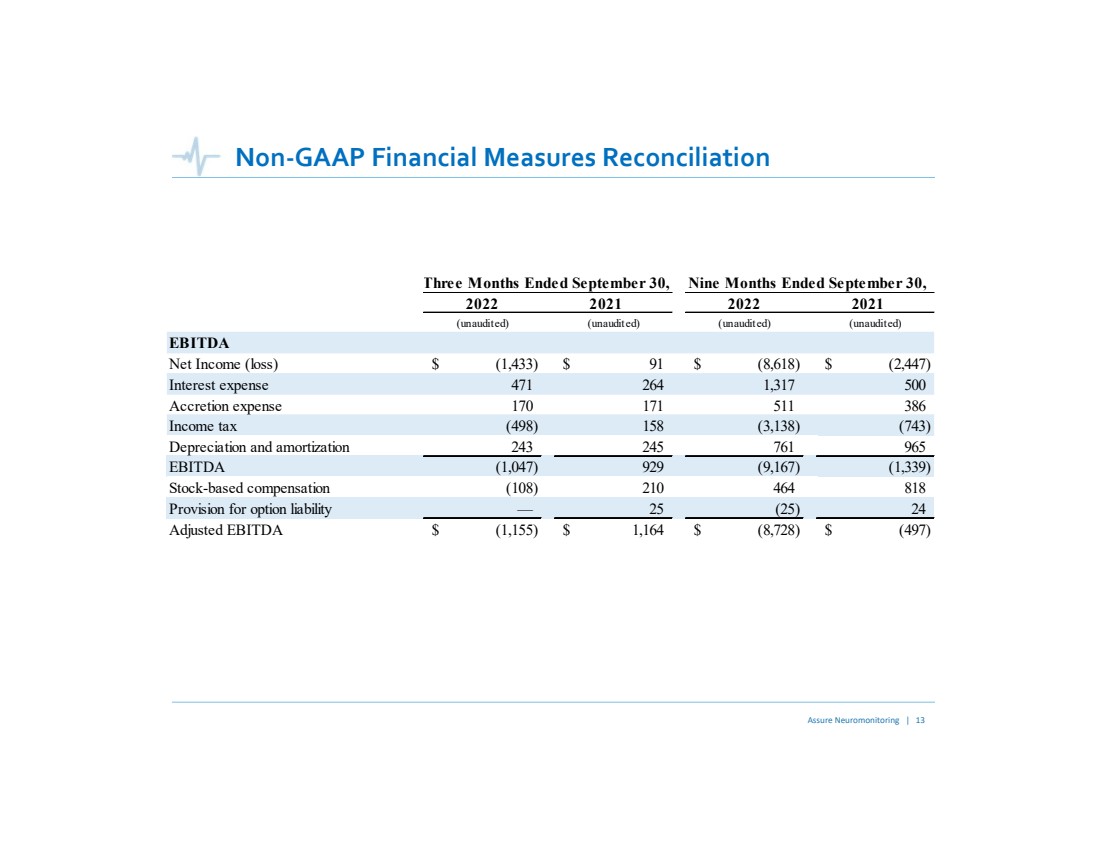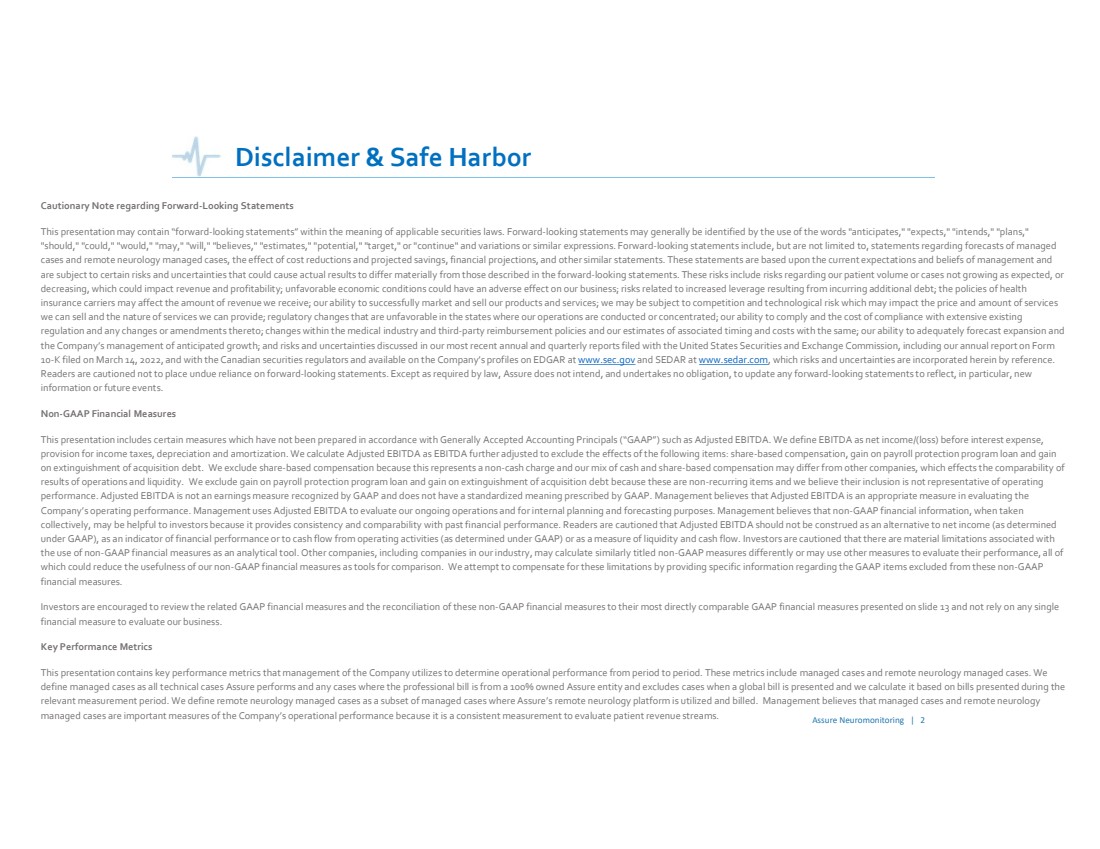
| Cautionary Note regarding Forward-Looking Statements This presentation may contain “forward-looking statements” within the meaning of applicable securities laws. Forward-looking statements may generally be identified by the use of the words "anticipates," "expects," "intends," "plans," "should," "could," "would," "may," "will," "believes," "estimates," "potential," "target," or "continue" and variations or similar expressions. Forward-looking statements include, but are not limited to, statements regarding forecasts of managed cases and remote neurology managed cases, the effect of cost reductions and projected savings, financial projections, and other similar statements. These statements are based upon the current expectations and beliefs of management and are subject to certain risks and uncertainties that could cause actual results to differ materially from those described in the forward-looking statements. These risks include risks regarding our patient volume or cases not growing as expected, or decreasing, which could impact revenue and profitability; unfavorable economic conditions could have an adverse effect on ourbusiness; risks related to increased leverage resulting from incurring additional debt; the policies of health insurance carriers may affect the amount of revenue we receive; our ability to successfully market and sell our products and services; we may be subject to competition and technological risk which may impact the price and amount of services we can sell and the nature of services we can provide; regulatory changes that are unfavorable in the states where our operations are conducted or concentrated; our ability to comply and the cost of compliance with extensive existing regulation and any changes or amendments thereto; changes within the medical industry and third-party reimbursement policies andour estimates of associated timing and costs with the same; our ability to adequately forecast expansion and the Company’s management of anticipated growth; and risks and uncertainties discussed in our most recent annual and quarterlyreports filed with the United States Securities and Exchange Commission, including our annual report on Form 10-K filed on March 14, 2022, and with the Canadian securities regulators and available on the Company’s profiles on EDGAR at www.sec.gov and SEDAR at www.sedar.com , which risks and uncertainties are incorporated herein by reference. Readers are cautioned not to place undue reliance on forward-looking statements. Except as required by law, Assure does not intend, and undertakes no obligation, to update any forward-looking statements to reflect, in particular, new information or future events. Non-GAAP Financial Measures This presentation includes certain measures which have not been prepared in accordance with Generally Accepted Accounting Principals (“GAAP”) such as Adjusted EBITDA. We define EBITDA as net income/(loss) before interest expense, provision for income taxes, depreciation and amortization. We calculate Adjusted EBITDA as EBITDA further adjusted to excludethe effects of the following items: share-based compensation, gain on payroll protection program loan and gain on extinguishment of acquisition debt. We exclude share-based compensation because this represents a non-cash charge and our mix of cash and share-based compensation may differ from other companies, which effects the comparability of results of operations and liquidity. We exclude gain on payroll protection program loan and gain on extinguishment of acquisition debt because these are non-recurring items and we believe their inclusion is not representative of operating performance. Adjusted EBITDA is not an earnings measure recognized by GAAP and does not have a standardized meaning prescribed by GAAP. Management believes that Adjusted EBITDA is an appropriate measure in evaluating the Company’s operating performance. Management uses Adjusted EBITDA to evaluate our ongoing operations and for internal planningand forecasting purposes. Management believes that non-GAAP financial information, when taken collectively, may be helpful to investors because it provides consistency and comparability with past financial performance. Readers are cautioned that Adjusted EBITDA should not be construed as an alternative to net income (as determined under GAAP), as an indicator of financial performance or to cash flow from operating activities (as determined under GAAP) orasa measure of liquidity and cash flow. Investors are cautioned that there are material limitations associated with the use of non-GAAP financial measures as an analytical tool. Other companies, including companies in our industry, may calculate similarly titled non-GAAP measures differently or may use other measures to evaluate their performance, all of which could reduce the usefulness of our non-GAAP financial measures as tools for comparison. We attempt to compensate for these limitations by providing specific information regarding the GAAP items excluded from these non-GAAP financial measures. Investors are encouraged to review the related GAAP financial measures and the reconciliation of these non-GAAP financial measures to their most directly comparable GAAP financial measures presented on slide 13 and not rely on any single financial measure to evaluate our business. Key Performance Metrics This presentation contains key performance metrics that management of the Company utilizes to determine operational performance from period to period. These metrics include managed cases and remote neurology managed cases. We define managed cases as all technical cases Assure performs and any cases where the professional bill is from a 100% owned Assure entity and excludes cases when a global bill is presented and we calculate it based on bills presented during the relevant measurement period. We define remote neurology managed cases as a subset of managed cases where Assure’s remote neurology platform is utilized and billed. Management believes that managed cases and remote neurology managed cases are important measures of the Company’s operational performance because it is a consistent measurement to evaluatepatient revenue streams. Disclaimer & Safe Harbor Assure Neuromonitoring | 2 |
